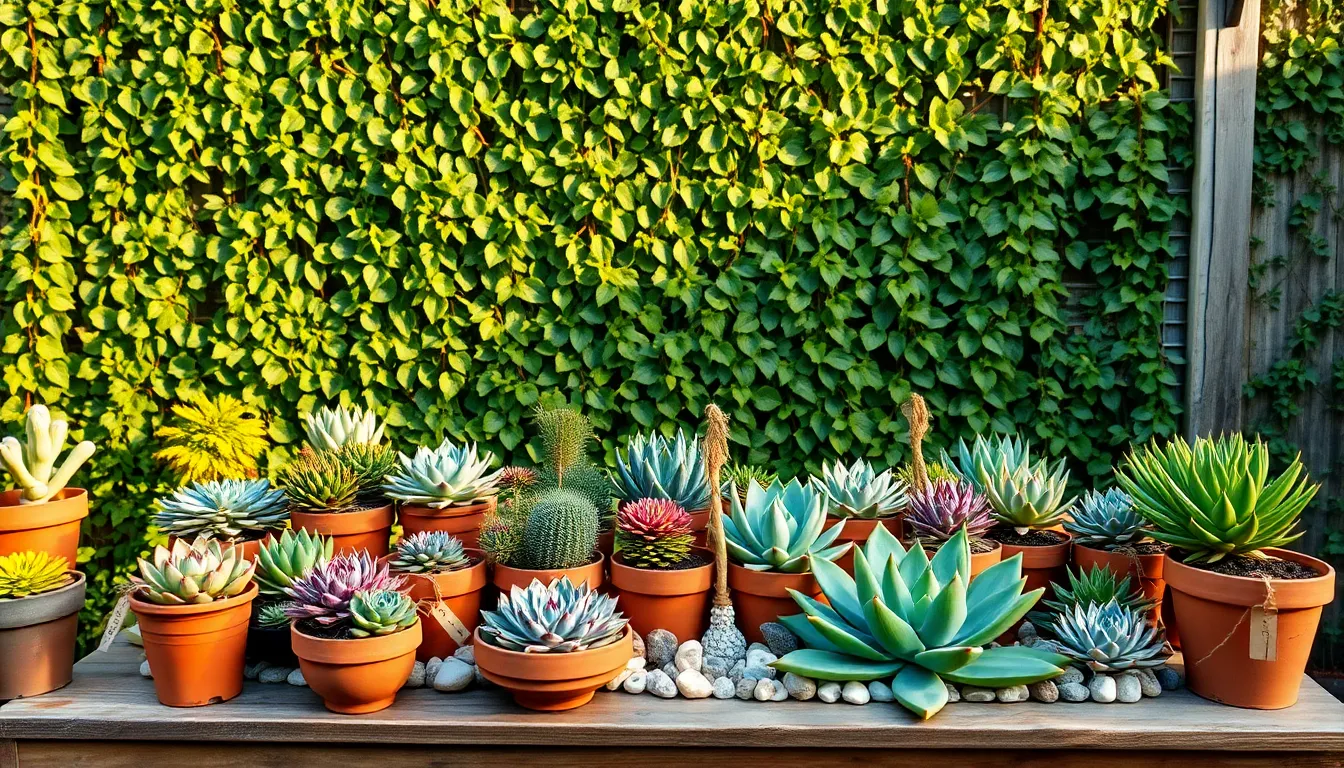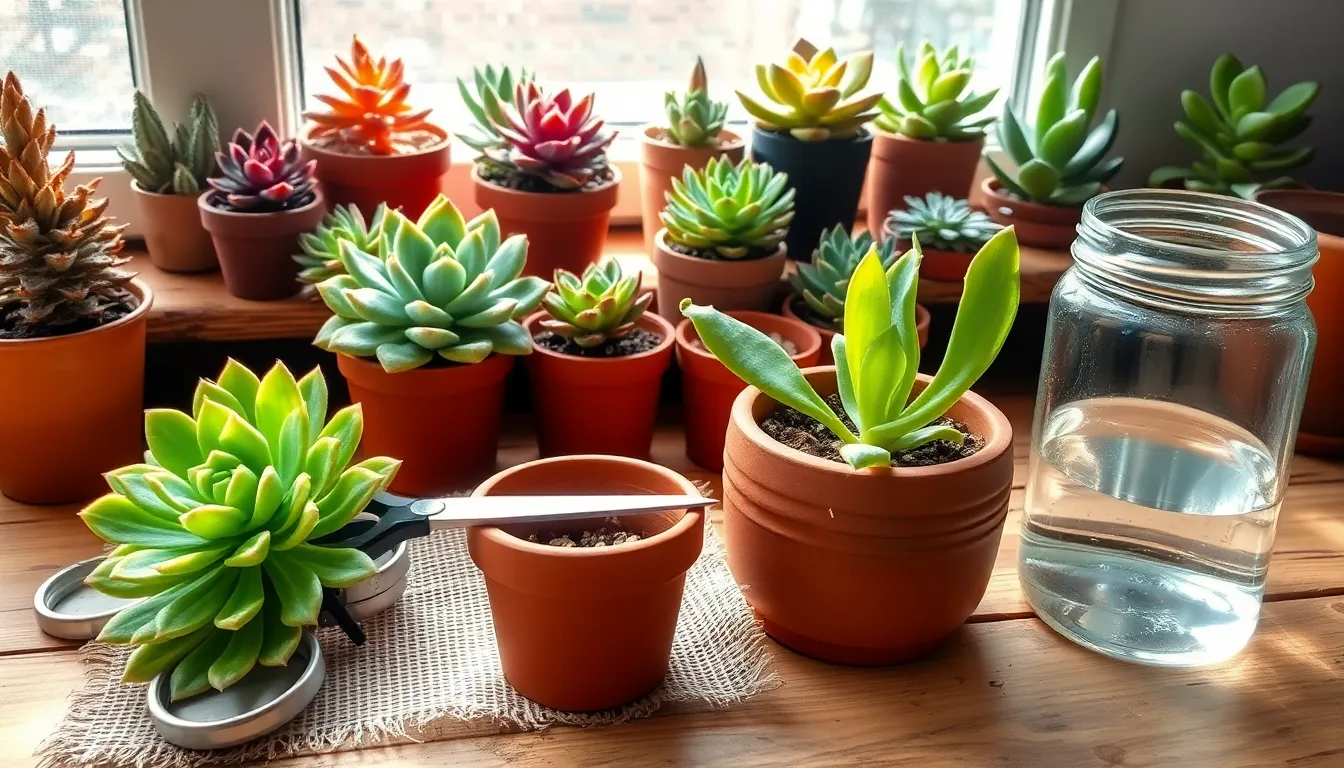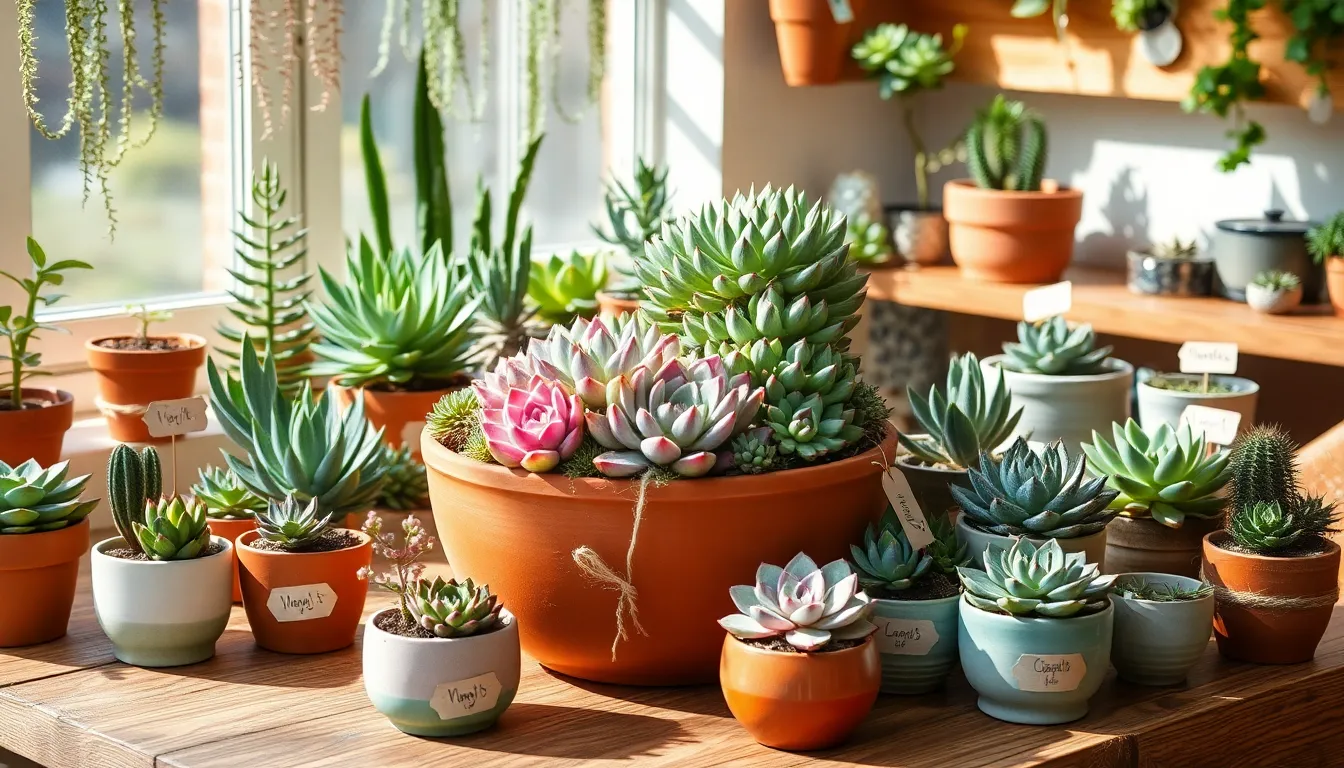Whether you’re just starting your gardening journey or have a seasoned green thumb, succulents offer a delightful way to bring a touch of nature into your home or garden without the fuss. These hardy plants, with their unique shapes and vibrant shades, have captured the hearts of gardeners everywhere for their beauty and resilience.
In this article, we’ll explore 15 low-maintenance succulents that are perfect for those who appreciate nature but lead busy lives. You’ll discover varieties that thrive with minimal care, providing lush greenery and striking visuals with just a little attention from you.
As we journey through the world of succulents, you’ll learn how to select the right plants for your space, whether it’s a sunny windowsill or an outdoor rock garden. We’ll also share tips on how to keep your succulents thriving, from the right watering techniques to choosing the perfect soil mix.
Prepare to be inspired by the endless possibilities these resilient plants offer, and discover how they can transform your living space into a serene, green oasis with ease. Whether you’re looking to start a new hobby or enhance your existing garden, these low-maintenance gems are sure to become your new favorites.
Understanding Succulent Basics
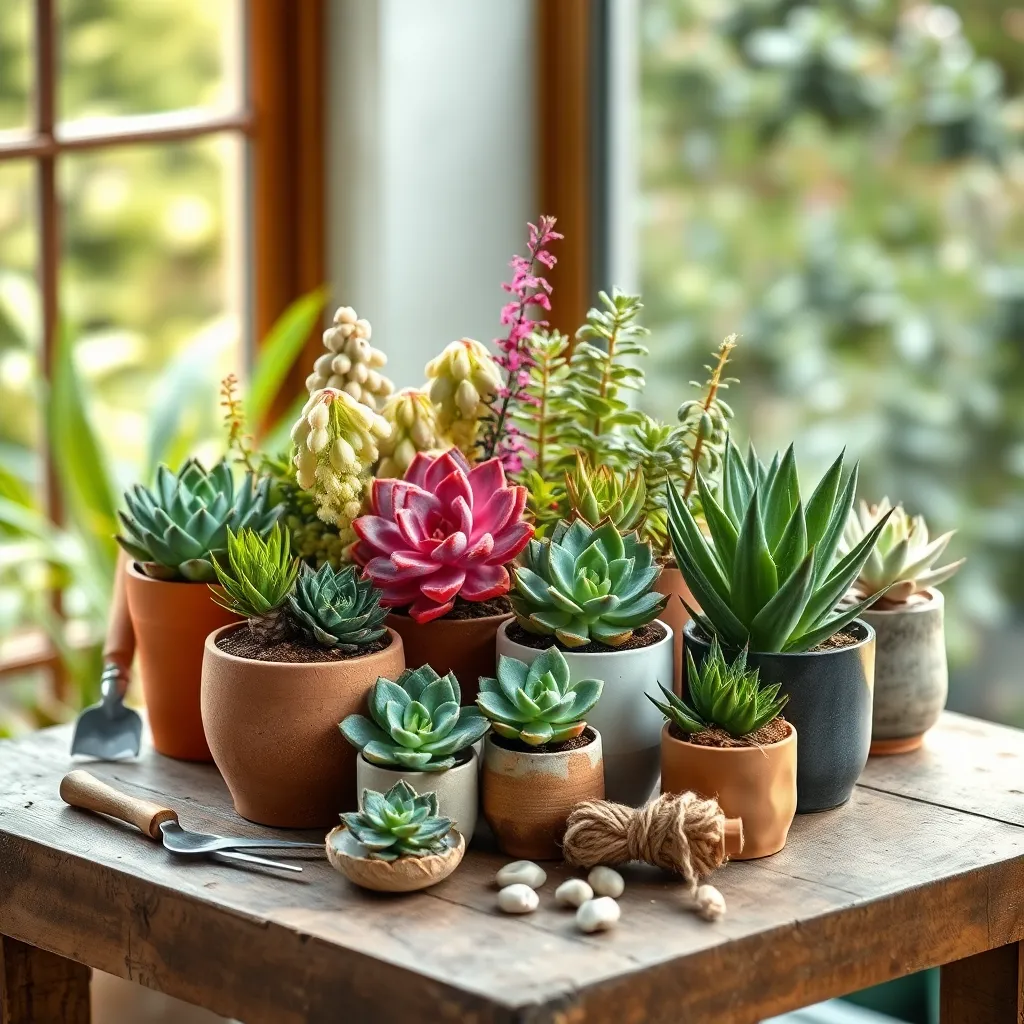
Succulents are drought-tolerant plants that store water in their leaves, making them an excellent choice for low-maintenance gardening. They thrive in well-draining soil, so consider using a cactus or succulent-specific potting mix to prevent root rot.
When it comes to watering, the key is to avoid overwatering; ensure the soil dries out completely between waterings. A general rule of thumb is to water your succulents once every two weeks, although this can vary based on your climate and the plant’s environment.
Providing ample sunlight is crucial for succulents to flourish. Place them in a spot where they can receive at least six hours of direct sunlight each day, but be mindful of intense afternoon sun which can scorch the leaves.
Advanced gardeners may want to consider propagating succulents to expand their collection. Simply take a healthy leaf cutting, let it dry for a few days to callous, then place it on lightly moistened soil until roots develop.
Regularly rotate your succulents to ensure even growth, as they tend to lean towards the light. This simple technique can help maintain a balanced shape and prevent the plants from becoming lopsided.
Choosing Hardy Varieties

When selecting succulents, opting for hardy varieties can ensure success, especially for those new to gardening. Hardy succulents are known for their ability to thrive in a range of conditions, making them ideal for low-maintenance gardens.
It’s crucial to consider your local climate when choosing hardy succulents. Some varieties, like Sedum and Sempervivum, are well-suited to withstand colder temperatures and can even survive frost.
For those in warmer regions, succulents like Agave and Aloe are excellent choices, as they can handle intense heat and prolonged dry spells. These plants typically require well-draining soil, such as a cactus mix, to prevent root rot.
Watering needs for hardy succulents are generally minimal, but it’s important to follow the “soak and dry” method. This means thoroughly watering the soil and then allowing it to dry completely before watering again, which mimics their natural habitat.
Advanced gardeners might consider experimenting with hybrid varieties that combine the hardiness of one species with the unique appearance of another. This not only adds diversity to your garden but can also improve the plants’ adaptability to varying conditions.
- Tip for Beginners: Start with a small collection of hardy succulents to learn their growth patterns and preferences before expanding your garden.
- Advanced Tip: Use mulch around your succulents to help retain soil moisture and regulate temperature, especially in regions with fluctuating climates.
Aloe Vera: A Classic Choice

Aloe Vera is a timeless succulent that has captivated gardeners with its resilience and versatility. This plant thrives in a variety of environments, making it a perfect choice for both beginners and seasoned gardeners.
To ensure your Aloe Vera flourishes, plant it in a well-draining soil mix, such as a cactus or succulent blend. Proper drainage is crucial; consider adding perlite or coarse sand to improve the soil’s aeration and prevent root rot.
Watering Aloe Vera requires a delicate balance, as it prefers to dry out completely between waterings. Typically, watering every two to three weeks is ideal, but always check the soil moisture first by inserting your finger an inch deep into the soil.
Position your Aloe Vera in a spot where it can bask in bright, indirect sunlight. Direct sun can scorch its leaves, so aim for a location with filtered light or morning sun to keep the plant healthy and vibrant.
Jade Plant: Durable and Stylish
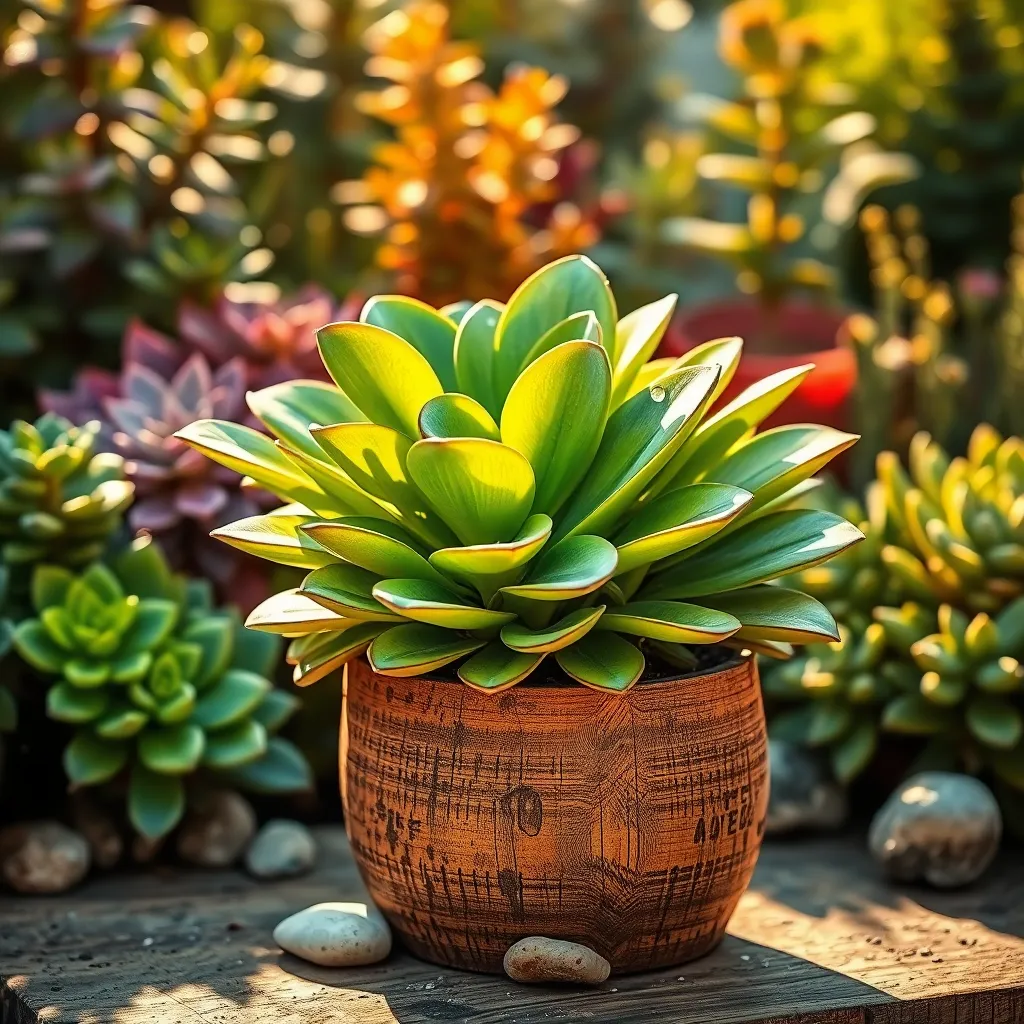
Jade plants, known for their thick, fleshy leaves and tree-like appearance, are an excellent choice for those seeking a durable yet stylish succulent. They thrive in a variety of environments, making them perfect for both indoor and outdoor settings.
To ensure your jade plant flourishes, place it in a well-draining potting mix designed specifically for succulents and cacti. A mixture of coarse sand, perlite, and a standard potting soil will provide the ideal conditions for root health and water management.
Watering is crucial, yet straightforward: allow the soil to dry completely between waterings to prevent root rot. Typically, in the growing season, watering once every two to three weeks is sufficient, while in the dormant winter months, watering once a month is often adequate.
For those looking to take their jade plant care to the next level, consider giving the plant a balanced, water-soluble fertilizer diluted to half strength during the spring and summer. This will encourage robust growth and enhance the plant’s natural luster and vibrancy.
Sedum: Groundcover Options
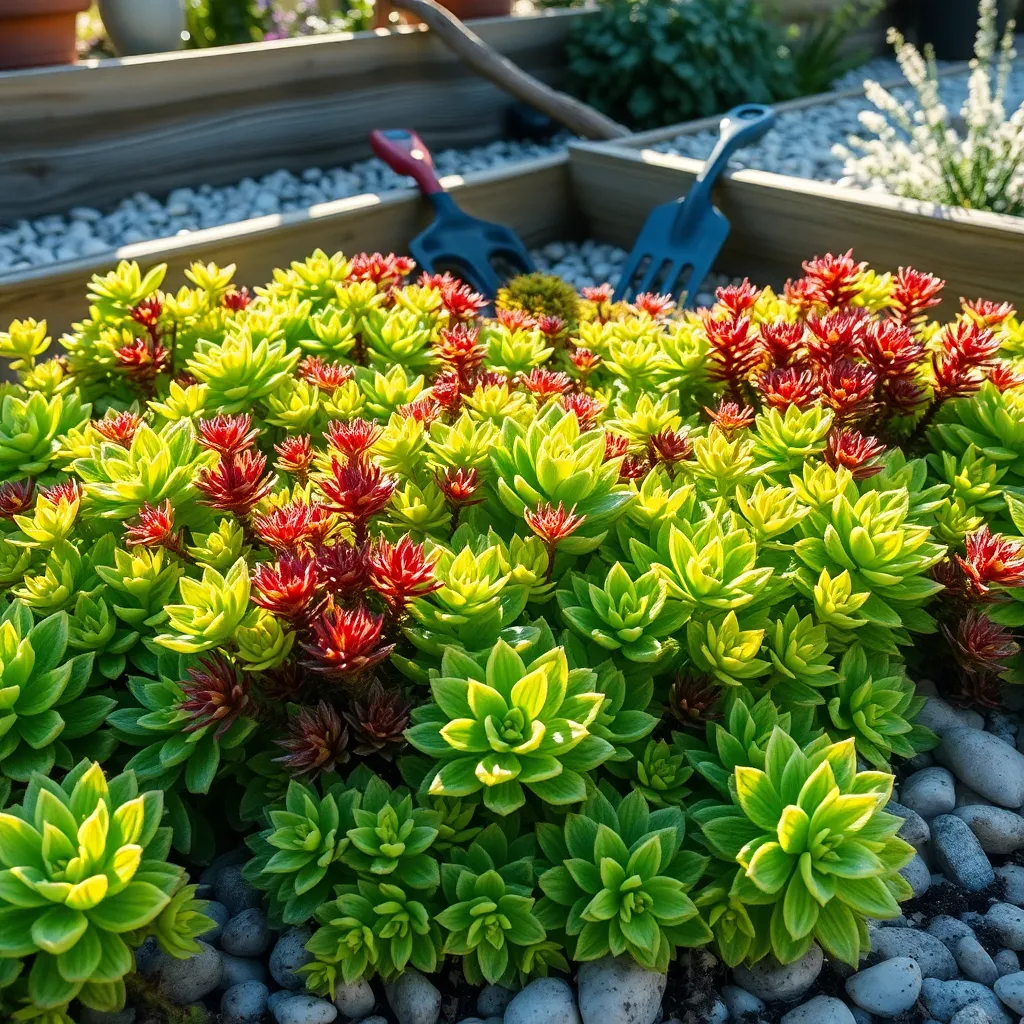
Sedum, also known as stonecrop, is a versatile groundcover option for gardeners looking to add a splash of color with minimal effort. These succulents are incredibly hardy, making them perfect for areas with poor soil where other plants might struggle to thrive.
To ensure your sedum thrives, plant it in well-draining soil, such as a sandy loam or a mixture of cactus soil with perlite. Water sparingly, allowing the soil to dry out completely between waterings, as sedums are drought-tolerant and can suffer from root rot if overwatered.
Varieties such as ‘Dragon’s Blood’ or ‘Angelina’ provide vibrant hues from red to golden-yellow that change with the seasons. Plant these in full sun to partial shade to enhance their colorful foliage, which can also serve as a natural weed suppressant.
For gardeners looking to cover large areas, consider using sedum mats, which are pre-grown and easy to install. Simply lay them over prepared soil, ensuring contact with the ground, and water lightly until they establish.
Echeveria: Rosette Beauty
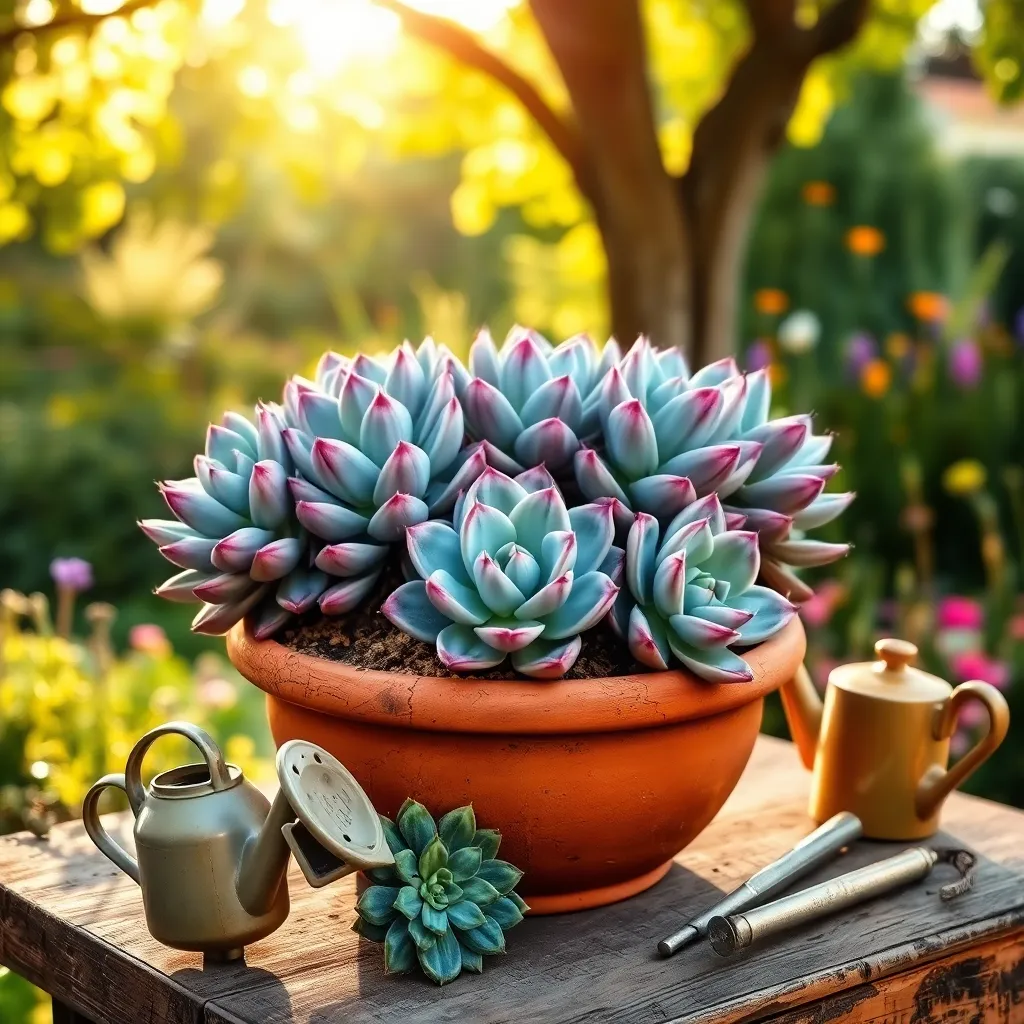
Echeveria, a stunning succulent known for its beautiful rosette shape, is a favorite among gardeners looking for low-maintenance plants. These succulents thrive in bright, indirect sunlight, making them perfect for sunny windowsills or well-lit rooms.
To keep your Echeveria healthy, it’s important to use a well-draining soil mix, ideally one designed specifically for cacti and succulents. Avoid overwatering by allowing the soil to dry out completely between waterings; typically, watering once every two weeks is sufficient.
One of the most appealing features of Echeveria is its ability to produce offsets, or “pups,” which can be easily propagated to create new plants. Simply detach the pup from the mother plant and allow it to callous over for a few days before planting it in a small pot with fresh soil.
For advanced gardeners, consider adding a diluted liquid fertilizer during the growing season to encourage robust growth. Remember to reduce watering in the winter months, as Echeverias enter a dormant period and require less moisture during this time.
Zebra Plant: Striped Elegance
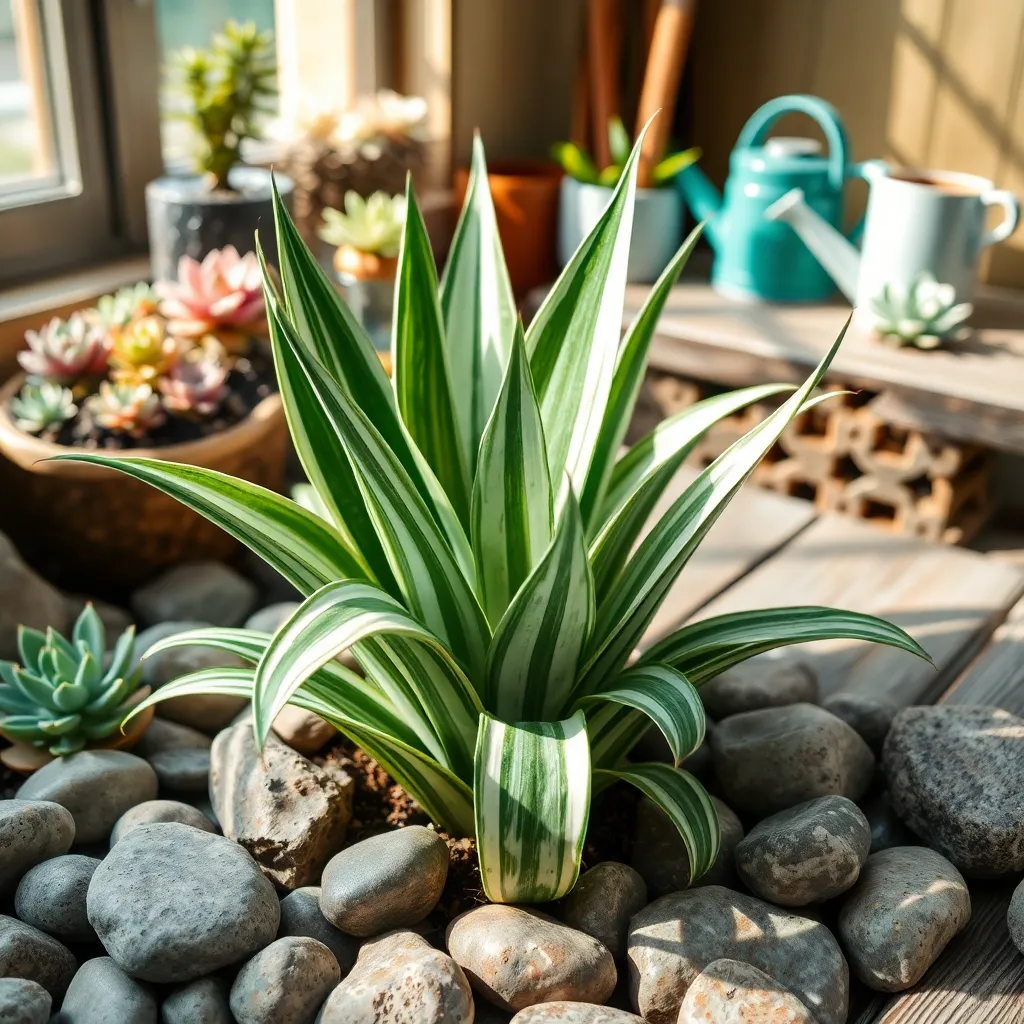
The Zebra Plant, or Haworthiopsis fasciata, is a striking succulent that’s both beautiful and easy to care for. Its dark green leaves adorned with white horizontal stripes create a visually appealing contrast, earning it the nickname “striped elegance.”
For optimal growth, place your Zebra Plant in a location with bright, indirect light. Direct sunlight can scorch its leaves, so a position near a window with filtered light is ideal.
Watering should be done sparingly, as Zebra Plants are drought-tolerant and prefer to dry out between waterings. A good rule of thumb is to water when the top inch of soil feels dry to the touch.
Use a well-draining soil mix, such as a cactus or succulent blend, to prevent root rot. Adding perlite or coarse sand can enhance drainage, providing a healthier environment for your plant.
For those looking to propagate, Zebra Plants can easily be multiplied through offsets. Gently separate the small “pups” from the base of the plant and replant them in their own pots with fresh soil.
Panda Plant: Fuzzy Appeal
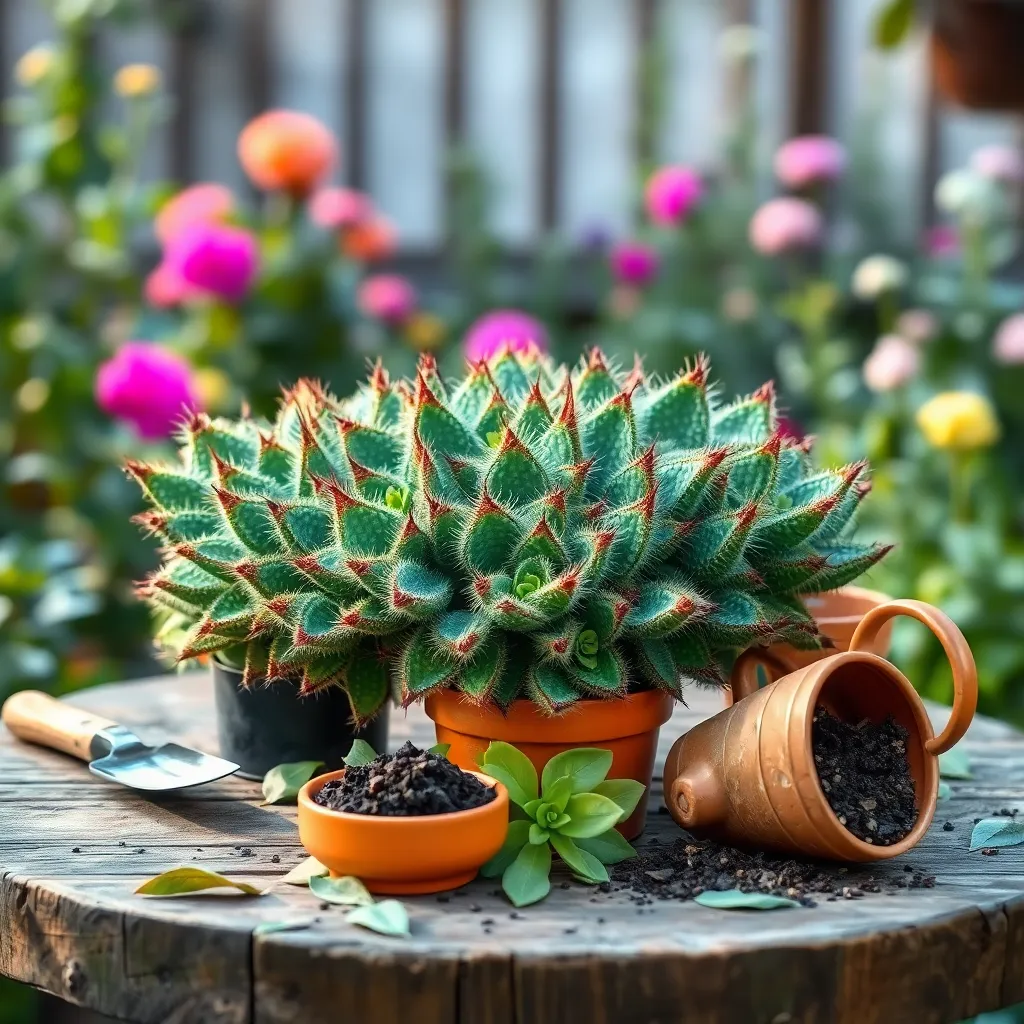
The Panda Plant, or Kalanchoe tomentosa, is a delightful succulent known for its fuzzy, silver-green leaves with brown edges. Its unique texture and appearance make it an attractive addition to any indoor plant collection.
For thriving Panda Plants, ensure they are placed in bright, indirect light to prevent leaf scorching. Use a well-draining cactus soil mix to mimic the plant’s natural environment and prevent root rot.
Watering should be done sparingly; let the soil dry out completely between waterings to avoid over-saturation. During the growing season, typically spring and summer, a monthly feeding with a diluted succulent fertilizer can help promote growth.
Avoid letting the plant sit in water, as this can lead to root rot. For those looking to propagate, simply take a leaf cutting and allow it to callous over before placing it on moist soil.
Snake Plant: Vertical Interest
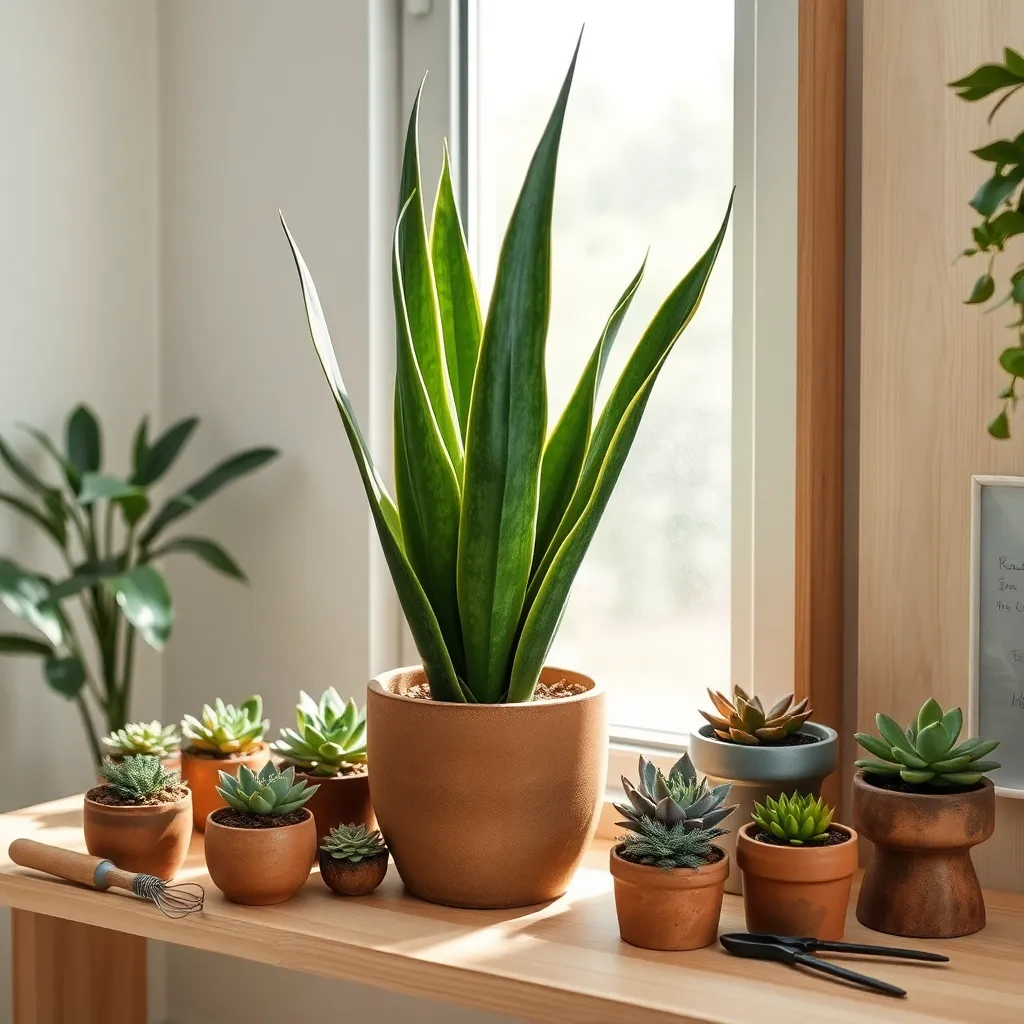
Snake plants, also known as Sansevieria, are prized for their striking, upright leaves that add vertical interest to any space. These hardy succulents thrive on neglect, making them an excellent choice for both busy gardeners and beginners.
To ensure optimal growth, plant your snake plant in a pot with well-draining soil, such as a cactus or succulent mix. Water sparingly—only when the top inch of soil feels dry to the touch—as overwatering can lead to root rot.
These plants are highly adaptable and can thrive in a range of light conditions, from low light to bright, indirect sunlight. For best results, place them in a spot where they receive indirect sunlight for at least a few hours each day.
Advanced gardeners can propagate snake plants easily by dividing rhizomes or leaf cuttings. Simply cut a healthy leaf into sections, let them dry for a day, and plant them in a moist soil mix, ensuring that the cut end is inserted into the soil.
Ponytail Palm: Unique Structure

The Ponytail Palm, known for its unique bulbous trunk and cascading leaves, is a striking addition to any indoor garden. This plant is actually a succulent, which makes it exceptionally drought-tolerant and easy to care for.
To thrive, the Ponytail Palm requires bright, indirect light, though it can adapt to lower light conditions. Ensure the soil is well-draining by using a cactus or succulent mix, which prevents root rot.
Watering is straightforward; let the soil dry out completely between waterings, typically every two to three weeks. Overwatering is the most common mistake, so err on the side of caution—less is more with this plant.
For those looking to give their Ponytail Palm a boost, consider a balanced liquid fertilizer once in the spring and again in the summer. Advanced gardeners may want to repot the plant every two to three years to refresh the soil and provide more room for growth.
Caring for Your Succulents
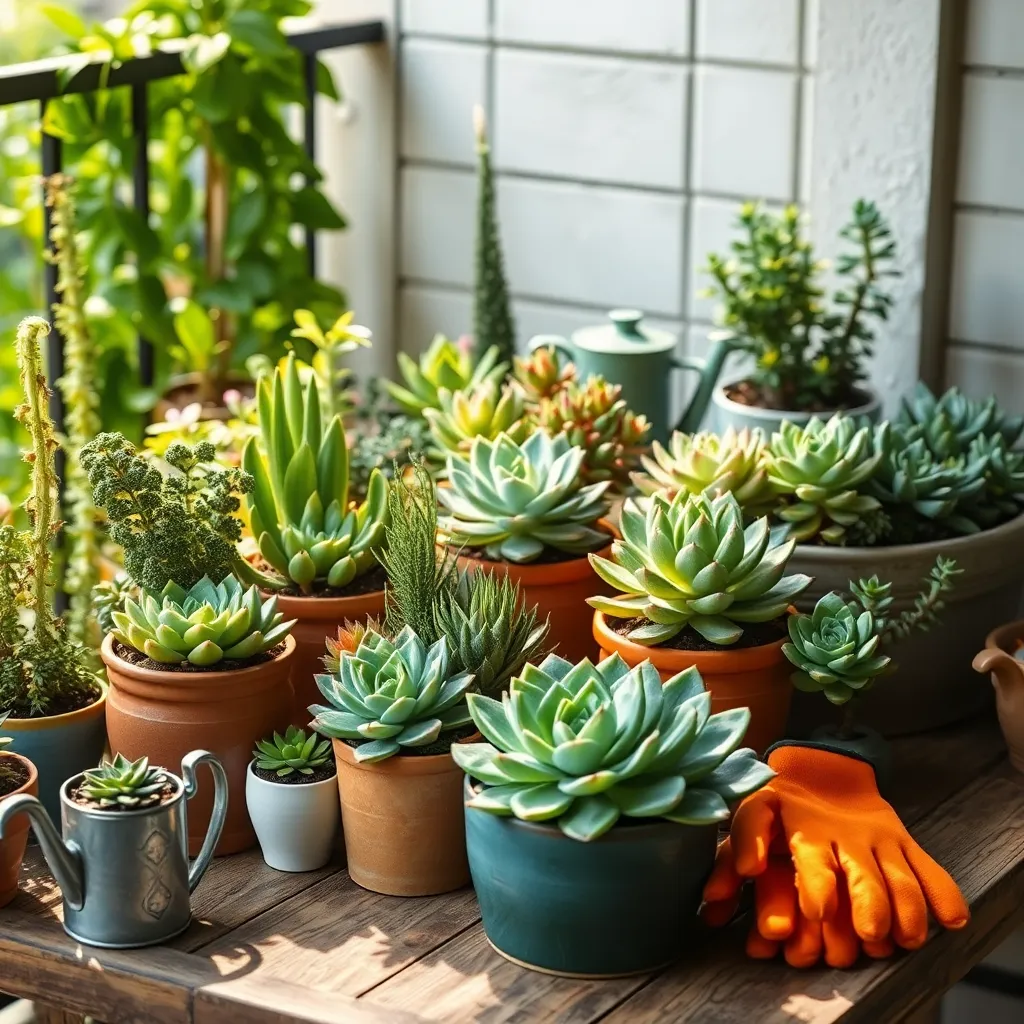
Succulents are beloved for their ability to thrive with minimal attention, making them perfect for busy gardeners. To ensure your succulents stay healthy, it’s crucial to provide well-draining soil, such as a cactus mix or a blend of potting soil and sand.
Watering succulents requires a delicate balance; they prefer to dry out completely between waterings. In general, water them every two weeks, but adjust according to your climate and the season—less frequent in winter and more during active growth periods.
Light is another key factor in succulent care, as these plants thrive in bright, indirect sunlight. If you’re growing them indoors, place them near a south or east-facing window for the best results, and consider rotating the plants every few weeks to ensure even light distribution.
Avoid over-fertilizing succulents; they don’t require much feeding. A diluted, balanced fertilizer applied once in the spring and again in the summer is usually sufficient to support their growth.
For advanced care, consider propagating your succulents to expand your collection. Simply take leaf cuttings and let them callous over before placing them on the soil surface, misting lightly to encourage root development.
Optimal Light Conditions
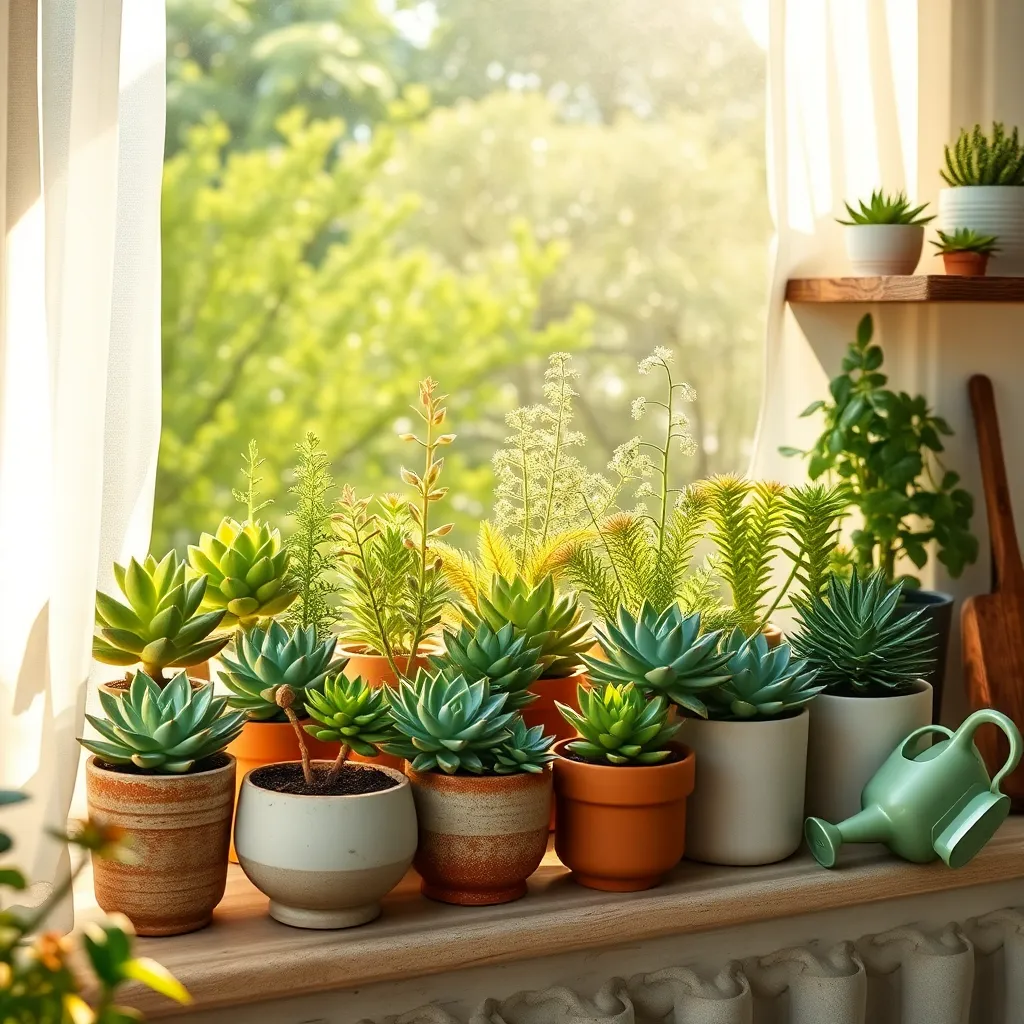
Understanding optimal light conditions is crucial for the success of your succulents. Most succulents thrive in bright, indirect light, which mimics their natural desert environments.
Place your succulents near a south or east-facing window to ensure they receive enough light. If natural light is insufficient, consider supplementing with a grow light to maintain healthy growth.
Observe your plants regularly to assess their light exposure. Signs of inadequate light include elongated stems and faded colors, while too much direct sunlight can cause leaf scorch.
For beginners, a simple rule is to provide about six hours of indirect sunlight daily. More experienced gardeners might experiment with positioning to find the sweet spot for each plant.
Incorporate these tips to create a thriving environment for your succulents. Remember, adjusting the light conditions can significantly impact the health and appearance of your plants.
Simple Propagation Techniques
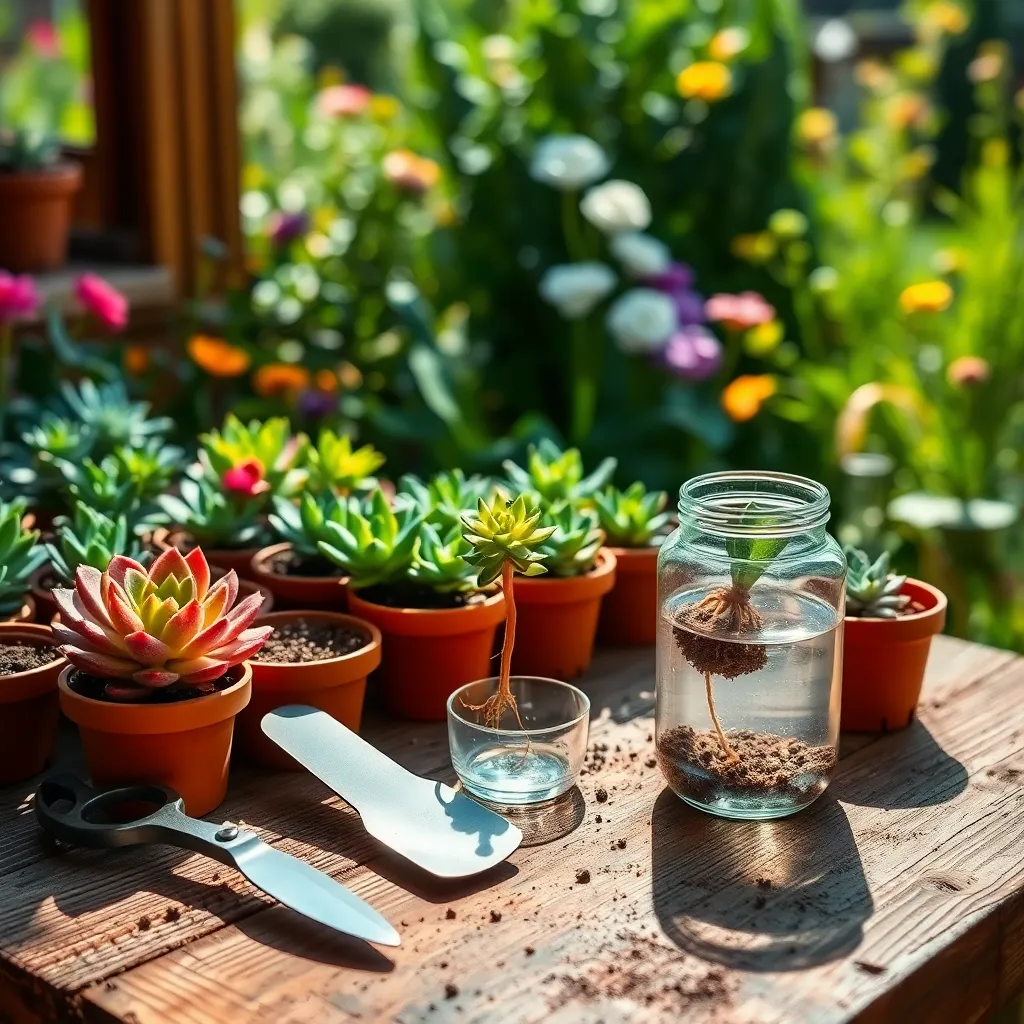
Propagating succulents is a rewarding way to expand your collection with minimal effort. One of the simplest methods is through leaf cuttings, which can be done by gently twisting a healthy leaf from the stem.
Allow the leaf to dry and callous over for a few days to prevent rot when planted. Once dried, place the leaf on top of well-draining soil, such as a cactus mix, and mist it lightly with water.
Ensure the soil remains slightly moist but not soggy, as succulents are prone to rot if overwatered. Within a few weeks, you should see tiny roots and new baby plants forming at the base of the leaf.
For those ready to try something a bit more advanced, stem cuttings can also be used to propagate succulents. Cut a stem from a mature plant, let it callous over, and then plant it in soil, ensuring it’s stable and upright.
- Tip: Choose a time of year when the plant is actively growing, such as spring or early summer, for best results.
- Tip: Use a clean, sharp knife or scissors to prevent infection and ensure a clean cut.
Water the cutting sparingly, just enough to keep the soil from completely drying out. With patience and care, your stem cutting will develop roots and eventually grow into a thriving new plant.
Troubleshooting Common Issues
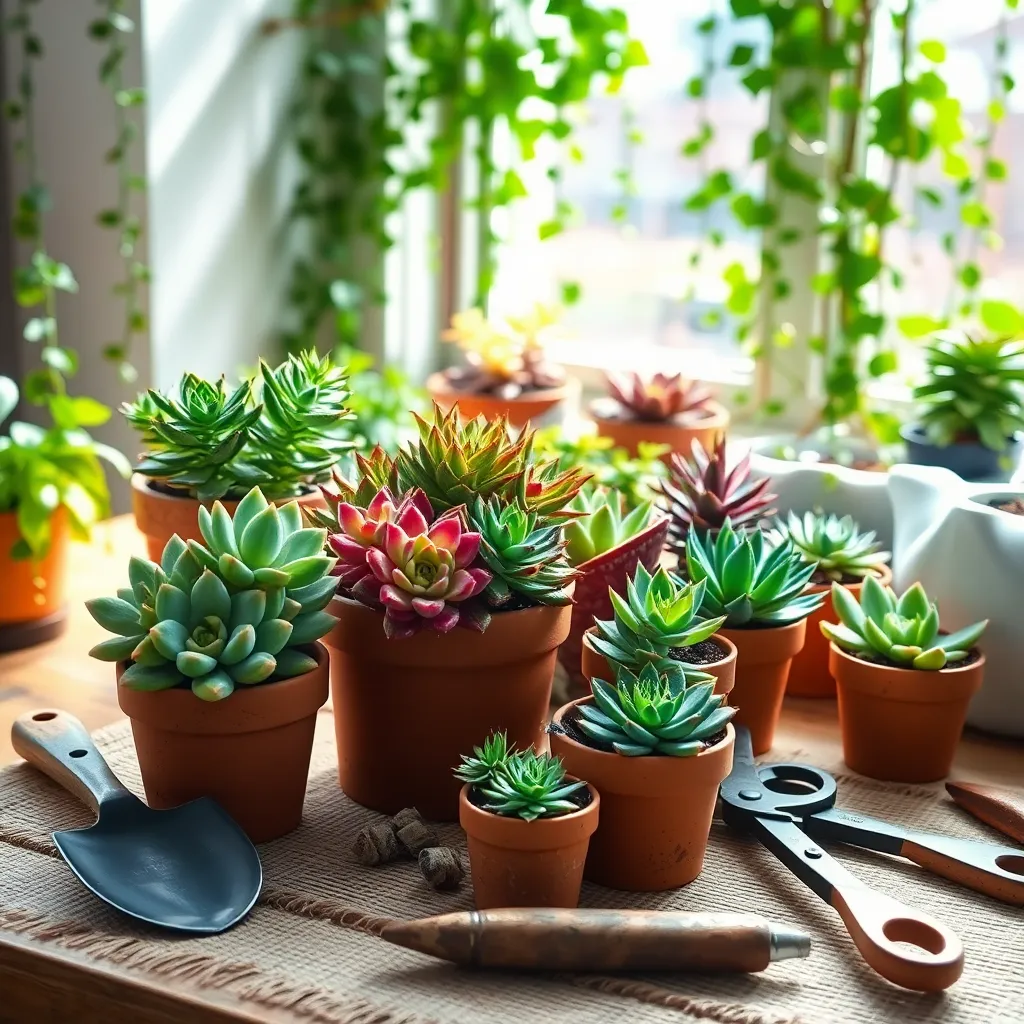
One common issue with succulents is overwatering, which can lead to root rot. To prevent this, use a well-draining soil mix and ensure pots have drainage holes, allowing excess water to escape easily.
If your succulents are stretching and losing their compact shape, they likely need more light. Position them near a south or east-facing window to provide adequate sunlight, or consider using a grow light if natural light is insufficient.
Pests such as mealybugs can also affect succulents, appearing as white, cottony masses on leaves and stems. Remove them by dabbing the affected areas with a cotton swab dipped in rubbing alcohol, ensuring all pests are eliminated to prevent recurrence.
For those experiencing leaf drop, it could be due to sudden temperature changes or drafts. Keep succulents in a stable environment, ideally between 60-80°F (15-27°C), and away from air vents or drafty windows.
Decorative Potting Ideas
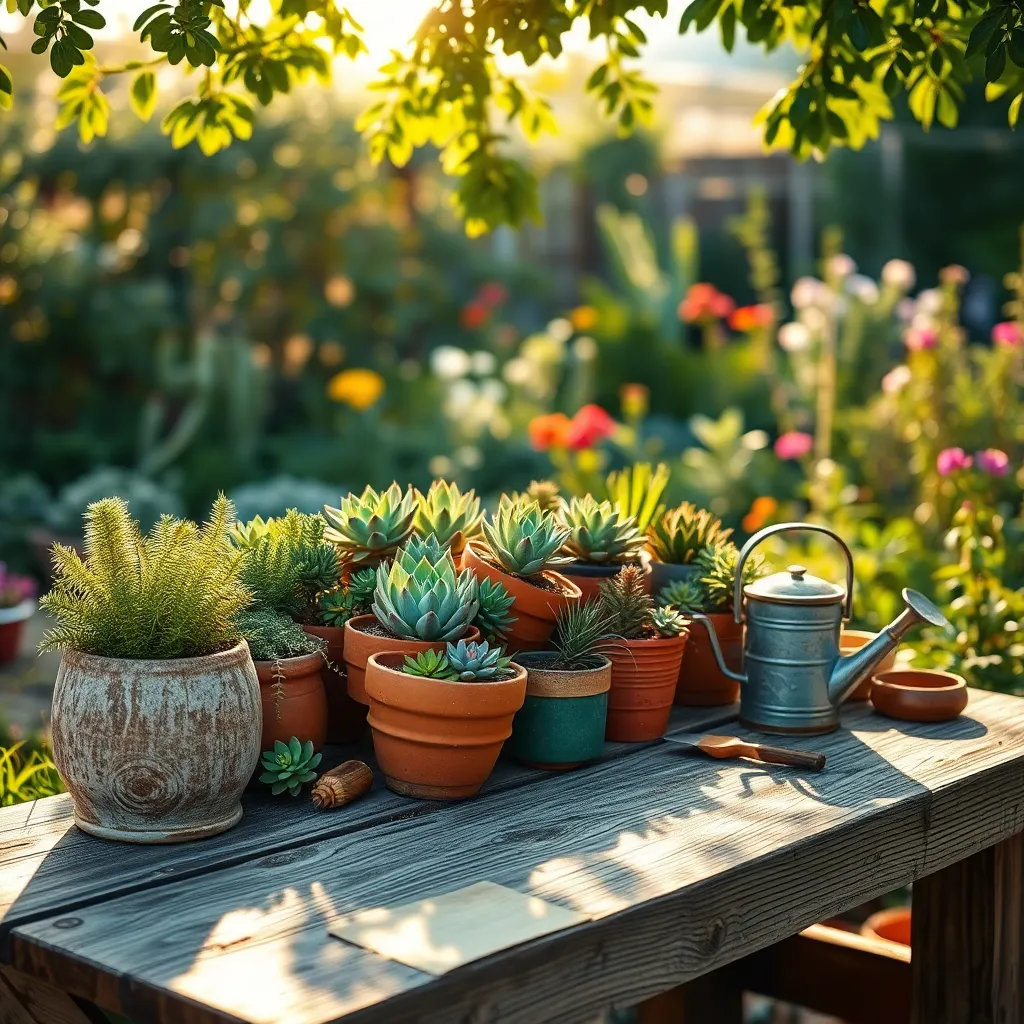
When it comes to decorative potting ideas for your low-maintenance succulents, creativity and practicality go hand in hand. Opt for pots that provide excellent drainage, as succulents thrive in soil that doesn’t retain excess moisture.
Consider using a mix of traditional and unconventional containers to add visual interest. Old teacups, colanders, and even hollowed-out logs can serve as unique pots, provided they have drainage holes or a layer of gravel at the bottom to prevent waterlogging.
For an added touch of style, think about grouping succulents with similar care needs together in a single pot. This not only creates a stunning display but also simplifies watering routines, as you’ll be catering to plants that all prefer similar conditions.
Use a cactus or succulent-specific potting mix, which typically contains a higher percentage of sand or perlite to aid in drainage. Top-dress the soil with small rocks or pebbles to further reduce moisture around the plant base and enhance the aesthetic appeal.
Experiment with vertical arrangements or tiered stands to take advantage of limited space while displaying your succulents prominently. These setups can also improve air circulation, which is beneficial for plant health.
For those looking to try something advanced, consider creating a living wall or hanging succulent garden. These installations require careful planning to ensure each plant receives adequate light and water, but the results are stunning and can transform any space.
Conclusion: Growing Success with These Plants
As we journeyed through the vibrant world of succulents, each of the 15 varieties highlighted key relationship concepts: resilience, adaptability, nurturing, patience, compatibility, space, growth, harmony, balance, appreciation, individuality, support, understanding, communication, and commitment. These elements, much like low-maintenance succulents, require mindful care but can thrive with simplicity and attention.
To cultivate your own flourishing relationship garden, start by choosing one concept that resonates with you and your partner. Perhaps it’s nurturing or communication—set a small, achievable goal around it this week. For instance, dedicate time each day to express appreciation or actively listen to your partner.
Remember, relationships are living entities, just like succulents. They thrive with consistent care and a little love. Bookmark this article to revisit these evergreen concepts and gain inspiration for your relationship journey.
As you look to the future, envision a relationship that grows stronger and more vibrant with each passing day. With these foundational principles, you’re well-equipped to nurture a connection that stands the test of time. Save this guide and let it serve as your compass in cultivating a beautiful and enduring partnership.

